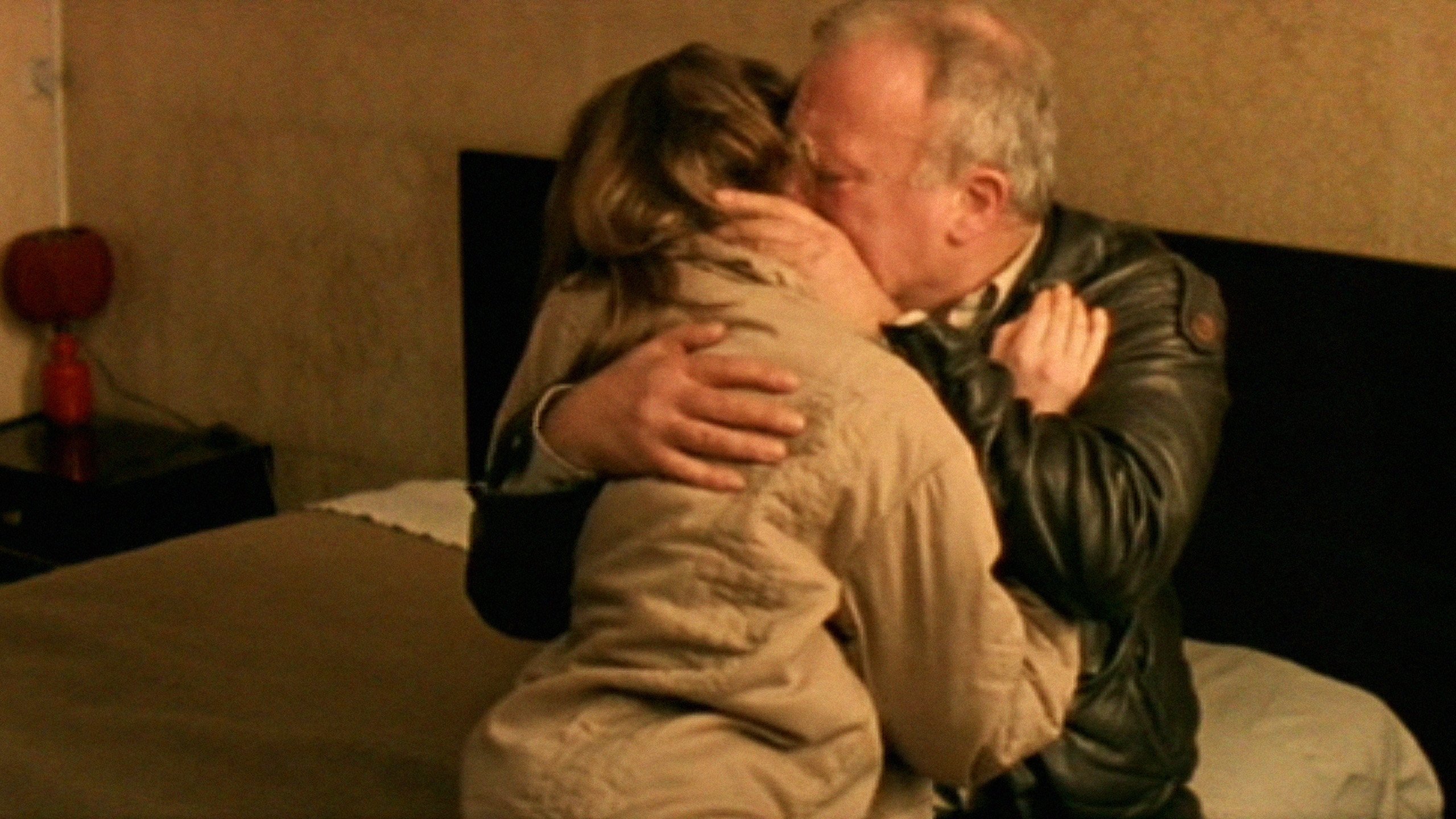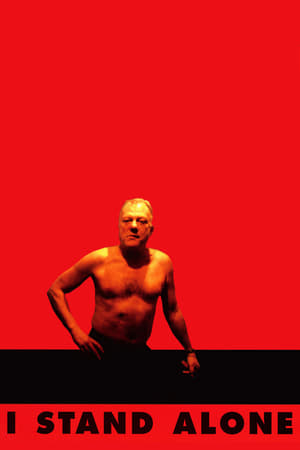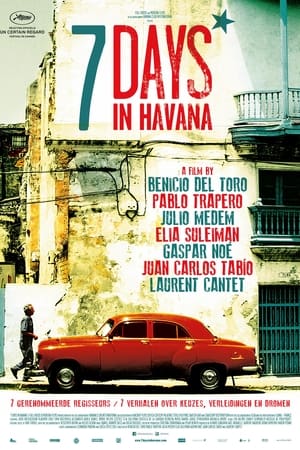Gaspar Noé is a controversial and provocative filmmaker who is known for his intense and visceral films that explore the darker aspects of the human experience.
His films often feature graphic violence, explicit sexuality, and confrontational subject matter, and have been praised for their uncompromising and fearless approach to filmmaking.
Here are some of the best Gaspar Noé films and a brief introduction to each:
“Irreversible” (2002): This film is a powerful and disturbing examination of the aftermath of a brutal rape and the events that led up to it, told in reverse chronological order.
“Climax” (2018): This film is a hypnotic and nightmarish descent into madness, following a group of dancers who are trapped in a remote location after drinking spiked sangria.
The film is known for its intense and immersive visuals, as well as its powerful use of music and dance to create a sense of emotional and psychological disorientation.
Best Gaspar Noe Movies
Gaspar Noé’s films are challenging and uncompromising works of art that push the boundaries of what is acceptable in cinema.
They are not for the faint of heart, but for those who are willing to explore the darker aspects of the human experience, they are powerful and deeply resonant works that will leave a lasting impression.
1. I Stand Alone (1998)


I Stand Alone
In the bowels of France.
1998 • 1h 29min • ★ 7.462/10 • France
Directed by: Gaspar Noé
Cast: Philippe Nahon, Blandine Lenoir, Frankie Pain, Martine Audrain, Zaven
After completing jail time for beating up a man who tried to seduce his mentally-handicapped teenage daughter, The Butcher wants to start life anew. He institutionalizes his daughter and moves to the Lille suburbs with his mistress, who promises him a new butcher shop. Learning that she lied, The Butcher returns to Paris to find his daughter.
“I Stand Alone” is a 1998 French film directed by Gaspar Noé. Here are some key characteristics of the film:
Disturbing and confrontational subject matter: “I Stand Alone” deals with disturbing and confrontational subject matter, including sexual violence, incest, and suicide.
The film’s protagonist is an abusive and unstable butcher who spirals into a downward spiral of violence and despair. The film is unflinching in its portrayal of the character’s inner turmoil and the destructive consequences of his actions.
Non-linear narrative structure: The film employs a non-linear narrative structure, jumping back and forth in time and using subjective flashbacks to convey the character’s emotional state.
This approach creates a sense of disorientation and unease, mirroring the character’s own psychological instability.
Minimalist and austere style: The film’s minimalist and austere style is characterized by its spare use of dialogue, its stripped-down production design, and its muted color palette.
The film’s stark and unadorned visual style underscores the character’s sense of despair and his inability to connect with the world around him.
Critical and controversial reception: “I Stand Alone” was met with critical acclaim upon its release, but it also sparked controversy and outrage due to its disturbing subject matter and unflinching portrayal of violence.
The film’s uncompromising approach to its subject matter continues to divide audiences and provoke discussion to this day.
- Factory sealed DVD
- Philippe Nahon, Blandine Lenoir, Frankie Pain (Actors)
- Gaspar No (Director) - Gaspar No (Writer)
- English (Subtitle)
- English (Publication Language)
2. Irreversible (2002)
“Irreversible” is a French film released in 2002, directed by Gaspar Noé. The film is infamous for its graphic and disturbing scenes, and for its non-linear structure, which tells the story in reverse chronological order.
The film follows the story of two men, Marcus (Vincent Cassel) and Pierre (Albert Dupontel), who are seeking revenge after the rape and brutal beating of Marcus’ girlfriend, Alex (Monica Bellucci).
If you like Gaspar Noe’s work, on our sister site AuteurGraph we have a profile page, a visual film timeline, and a ratings page that gives a tonne of info and data about their career in a visualized form.
The story is told in reverse chronological order, beginning with the aftermath of the violent revenge and then moving backwards through the events leading up to the rape.
“Irreversible” is an intense and challenging film that is not for the faint of heart. The graphic and disturbing scenes, particularly the extended rape scene, have been the subject of much controversy and debate.
However, the film is also an impressive technical achievement, with Noé’s use of long takes and complex camera movements creating a disorienting and dizzying effect that adds to the overall sense of unease.
Despite its difficult subject matter, “Irreversible” has been praised for its bold and unflinching approach to storytelling, and for its exploration of themes of time, memory, and the cyclical nature of violence.
For those who can handle the graphic content, “Irreversible” is a challenging and thought-provoking film that is sure to leave a lasting impression.
- Amazon Prime Video (Video on Demand)
- Monica Bellucci, Vincent Cassel, Albert Dupontel (Actors)
- Gaspar Noé (Director) - Gaspar Noé (Writer) - Christophe Rossignon (Producer)
- English, Spanish, Italian, Dutch, Portuguese (Playback Language)
- English, Spanish, Italian, Dutch, Portuguese (Subtitles)
3. 8 (2008)
“8” is a 2008 experimental film directed by Jane Campion, Gael García Bernal, Jan Kounen, Mira Nair, Gaspar Noé, Abderrahmane Sissako, Gus Van Sant, and Wim Wenders.
The film is composed of eight short segments, each directed by one of the eight directors, and explores different themes related to the United Nations’ Millennium Development Goals, which are a set of eight international development targets.
Each segment of “8” is set in a different country and features a different story, but all are united by a common focus on the theme of human development.
The film features a mix of fictional and documentary elements, and each segment is shot in the director’s own unique style, resulting in a diverse and eclectic collection of cinematic experiences.
“8” has been praised for its ambitious scope, its innovative approach to storytelling, and its commitment to raising awareness of important global issues.
The film offers a powerful commentary on the importance of global cooperation, and highlights the urgent need for action on a range of pressing social and environmental issues.
Overall, “8” is a moving and thought-provoking work of art that challenges viewers to consider their own role in creating a better world for all.
- Amazon Prime Video (Video on Demand)
- Esteban De La Isla, Jordan Knapp, Don Baldaramos (Actors)
- Gabriele Fabbro (Director) - Gabriele Fabbro (Writer) - Gabriele Fabbro (Producer)
- English, Spanish, French, Italian, Dutch (Playback Language)
- English, Spanish, French, Italian, Dutch (Subtitles)
4. Enter the Void (2009)
“Enter the Void” is a 2009 experimental drama film directed by Gaspar Noé. The film follows the story of Oscar, a young American drug dealer living in Tokyo who is killed in a police raid.
The film then takes an otherworldly turn, as Oscar’s spirit leaves his body and travels through time and space, exploring his memories, dreams, and desires.
The film is notable for its innovative visual style, which uses first-person perspective, psychedelic imagery, and experimental camera techniques to create a surreal and immersive experience for the viewer.
The film’s sound design is also a standout element, with a pulsating electronic score that enhances the film’s trippy, dreamlike quality.
At its core, “Enter the Void” is a meditation on life, death, and the interconnectedness of all things.
The film explores themes of reincarnation, spirituality, and the role of memory in shaping our perception of reality.
It is a powerful and thought-provoking work that is not afraid to challenge the viewer’s expectations and push the boundaries of what is possible in cinema.
Overall, “Enter the Void” is a visually stunning and emotionally resonant film that showcases Noé’s unique vision and his ability to create deeply affecting works of art.
It is a must-see for anyone interested in experimental cinema and for those who are looking for a mind-bending and immersive cinematic experience.
No products found.
5. 7 Days in Havana (2011)


7 Days in Havana
2012 • 2h 9min • ★ 5.7/10 • Cuba
Directed by: Laurent Cantet
Cast: Josh Hutcherson, Daniel Brühl, Emir Kusturica, Elia Suleiman, Sebastián Barriuso
A lesbian, an aspiring actor, an aspiring singer, a low-class marriage, a neighborhood community and 2 renowned directors have memorable less-than-24-hour-long experiences while living in/visiting the capital of Cuba.
“7 Days in Havana” is a 2011 film that consists of seven short films, each set in Havana and directed by a different filmmaker. Here are some key characteristics of the film:
Multiple perspectives: Because the film is made up of seven short films, each directed by a different filmmaker, “7 Days in Havana” offers multiple perspectives on life in Havana.
Each film explores different themes, characters, and settings, creating a diverse and multifaceted portrait of the city.
Focus on everyday life: The film is grounded in the everyday experiences of the people who live in Havana.
The stories are often simple and mundane, focusing on moments of connection, misunderstanding, and humor that are relatable to audiences around the world.
Exploration of social issues: The film also explores social issues that affect the people of Havana, including poverty, unemployment, and political oppression.
These themes are often explored subtly, through character development and interpersonal relationships, rather than through explicit commentary or polemic.
Collaborative approach: The film’s collaborative approach to filmmaking is also a key characteristic.
The filmmakers work together to create a cohesive vision for the film, while also bringing their own distinctive voices and styles to their individual segments.
This approach creates a rich and varied film that is greater than the sum of its parts.
No products found.
6. Short Plays (2014)
“Short Plays” is a 2014 film directed by David Mamet, based on a collection of his own one-act plays. The film consists of several separate short plays, each with its own distinct storyline and characters.
The plays cover a range of topics and themes, from a group of businessmen discussing the meaning of life over lunch, to a couple arguing about their relationship while driving home from a party.
The dialogue is sharp and witty, with Mamet’s signature style of clipped, staccato dialogue and often confrontational interactions between the characters.
While the film is a departure from Mamet’s more well-known works like “Glengarry Glen Ross” and “Oleanna”, it still showcases his talent for creating compelling and complex characters, and his ability to capture the nuances of human interaction.
The film also features a talented ensemble cast, including William H. Macy, Patti LuPone, and Rebecca Pidgeon.
For fans of Mamet’s work, “Short Plays” is a must-see film that showcases his talent for writing engaging and thought-provoking dialogue, and his ability to create memorable characters and situations.
Even for those who are not familiar with Mamet’s work, “Short Plays” is a great introduction to his unique voice and style as a writer and filmmaker.
- English (Publication Language)
- 400 Pages - 07/01/2016 (Publication Date) - Applause Theatre & Cinema Books (Publisher)
7. Love (2015)
“Love” is a 2015 French romantic drama film directed by Gaspar Noé. The film explores the passionate, tumultuous, and ultimately destructive relationship between an American film student, Murphy, and his French girlfriend, Electra.
The film is notable for its explicit depictions of sex and drug use, as well as its non-linear narrative structure.
“Love” received mixed reviews from critics, with some praising its bold, unflinching approach to sex and love, while others criticized it for its lack of depth and gratuitous sexual content.
Despite the controversy surrounding the film, “Love” has been praised for its striking visual style, including its use of vivid, saturated colors and long, unbroken takes.
Overall, “Love” is a challenging and provocative work of art that pushes the boundaries of traditional cinema. It is a raw, intense, and at times disturbing exploration of the nature of love, desire, and human relationships.
- Amazon Prime Video (Video on Demand)
- Aomi Muyock, Klara Kristin, Karl Gusman (Actors)
- Gaspar Noé (Director) - Gaspar Noé (Writer) - Gaspar Noé (Producer)
- English (Playback Language)
- English (Subtitle)
8. Climax (2018)
Climax” is a 2018 horror-musical film directed by Gaspar Noé. The film follows a group of dancers who are trapped in a remote location after drinking spiked sangria.
As the drug takes hold, the dancers begin to experience a collective descent into madness, as they succumb to their darkest impulses and fears.
The film is notable for its intense and immersive visuals, which use vibrant colors, dizzying camera movements, and stylized lighting to create a sense of disorientation and psychological terror.
The film’s sound design is also a standout element, with a pulsating electronic score that adds to the sense of unease and impending doom.
At its core, “Climax” is a meditation on the dangers of groupthink and the way that social pressures and hierarchies can lead to violent and destructive behavior.
The film explores themes of power dynamics, addiction, and the thin line between sanity and madness.
It is a challenging and thought-provoking work that is not for the faint of heart, but for those who are willing to engage with its intense and confrontational subject matter, it is a powerful and deeply affecting cinematic experience.
Overall, “Climax” is a bold and uncompromising work of art that showcases Noé’s unique talent for creating visceral and emotionally charged films.
It is a must-see for fans of horror, experimental cinema, and those who are looking for a film that will leave a lasting impression.
No products found.
3 Characteristics of Gaspar Noe Films
Gaspar Noé is a controversial Argentine-French filmmaker known for his visually stunning and intense films that often explore themes of violence, sexuality, and the human psyche. Here are three characteristics of his films:
Disturbing and confrontational subject matter: Noé’s films often feature disturbing and confrontational subject matter, including sexual violence, drug use, and graphic violence.
Noé is unafraid to push the boundaries of what is acceptable on screen, and his films can be challenging and difficult to watch.
Non-linear storytelling: Noé frequently uses non-linear storytelling techniques in his films, jumping back and forth in time or showing the same events from different perspectives.
This approach can be disorienting for audiences but can also deepen their engagement with the film and its themes.
Unique visual style: Noé’s films are known for their unique visual style, which often includes long, unbroken takes, intense colors, and disorienting camera movements.
He uses a variety of techniques, including fisheye lenses and split-screen, to create a distinctive and immersive visual experience for the audience.
Noé’s films are also notable for their use of sound design, which can be disorienting or overwhelming in its intensity.
3 Reasons Why You Should Watch Gaspar Noe Films
Gaspar Noé is a French-Argentine filmmaker known for his bold and controversial style of filmmaking. Here are three reasons why you should watch his films:
Unconventional storytelling: Noé is known for his non-linear, fragmented narrative style. His films often jump back and forth in time, exploring the story and characters in a non-traditional way.
His storytelling technique can be jarring, but it is also a unique and bold approach to filmmaking that challenges the viewer to think about the story in a new way.
Bold visuals: Noé’s films are visually striking and often feature long takes, complex camera movements, and unusual angles.
He is not afraid to push the boundaries of what is traditionally considered “acceptable” in terms of graphic content or visual representation. His films are a feast for the eyes, and can be a
Provocative themes: Noé’s films often deal with taboo or controversial themes, such as sexuality, violence, and drug use.
He is unafraid to tackle subjects that many other filmmakers would shy away from, and his films can be challenging and thought-provoking.
Noé’s films may not be for everyone, but for those who are willing to engage with his work, they can be an incredibly rewarding and enriching experience.
Overall, Gaspar Noé’s films are highly recommended for those interested in challenging and unconventional cinema.
His bold style and provocative themes are sure to leave a lasting impression, and his films are a testament to the power of filmmaking as an art form.
Best Gaspar Noe Films – Wrapping Up
Gaspar Noé is a highly regarded French-Argentine filmmaker known for his controversial and boundary-pushing films. Here are some of his best films:
“I Stand Alone” (1998)
“Irreversible” (2002)
“Enter the Void” (2009)
“Love” (2015)
“Climax” (2018)
Noé’s films are notable for their intense, often brutal subject matter, as well as their innovative and boundary-pushing visual style.
His work frequently deals with controversial themes such as sex, violence, and drug use, and has been known to shock and provoke audiences.
Noé’s films are also characterized by their striking use of color, sound, and camera movement, which often combine to create a deeply immersive and visceral viewing experience.
Overall, Gaspar Noé is a filmmaker who is unafraid to take risks and push boundaries, and his films are powerful and thought-provoking works of art that challenge viewers to engage with the darkest and most complex aspects of the human experience.











